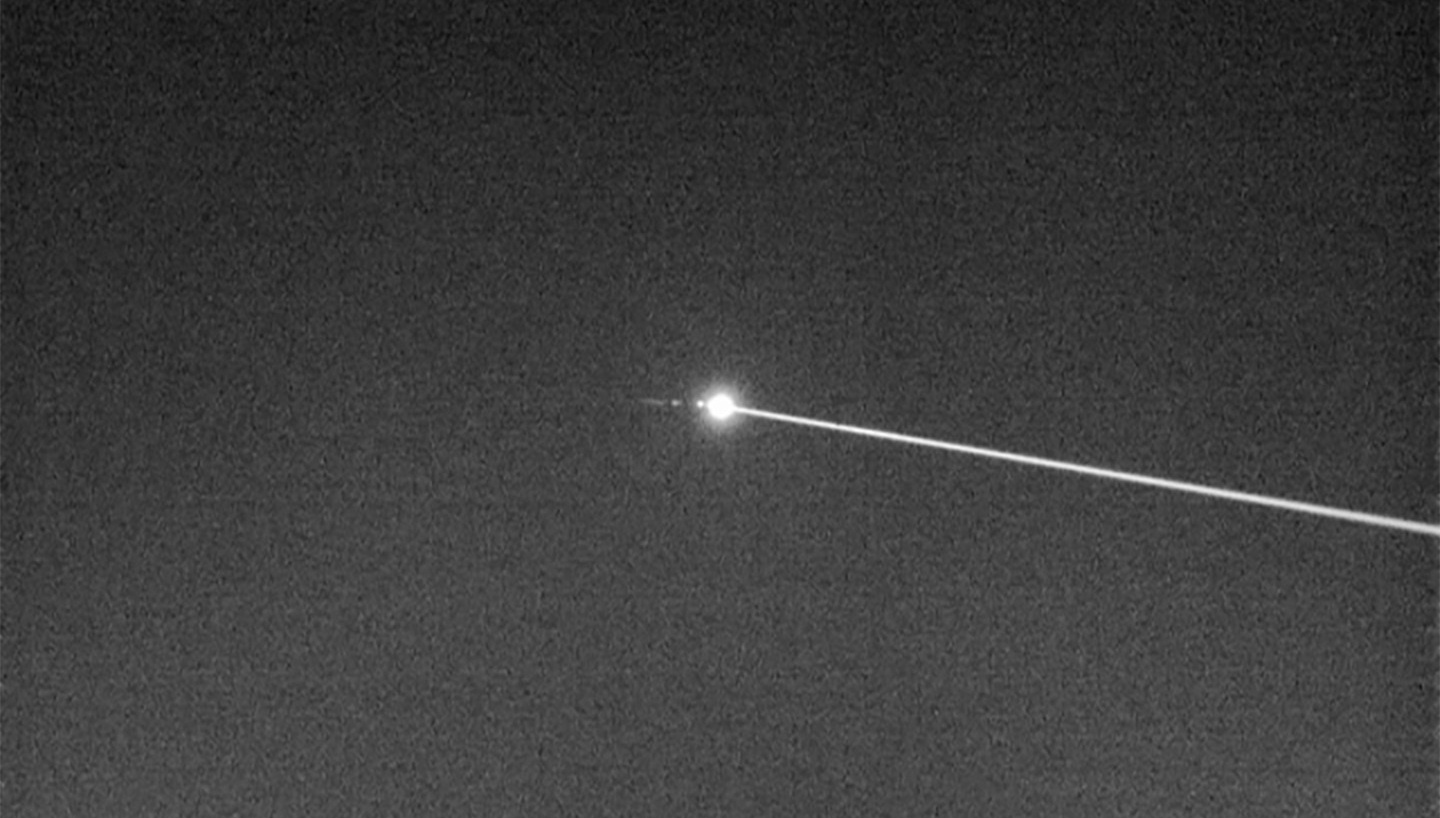

Earlier this month, Japan’s Kawasaki Heavy Industries showed off a new tool for fighting against drones. With an enclosed cabin on top of a four-wheel ATV frame, the system mounts a high-energy laser in the back, alongside the power needed to make it work. It is part of the growing arsenal of counter-drone weapons, and one that fits into the expanded role and arsenal of Japan’s modern military.
The laser and ATV combination was on display at the Defence and Security Equipment International (DSEI) Japan conference, which ran from March 15 through 17 outside Tokyo. The exhibition is a place for various arms makers from around the world to gather and showcase their wares to interested collaborators or governments. This year’s conference, the second Japan-hosted iteration, had 66 countries and 178 companies represented.
The system, while funded by Kawasaki, was made at the request of Japan’s Acquisition, Technology, and Logistics Agency (ATLA), a rough analog of DARPA that looks to integrate new tech into Japan’s self-defense forces. On display, the laser system included a tracker, a high-energy laser, a gimbal to balance and hold the laser’s focus, and a 2 kilowatt power source. It has a range of just 100 meters or 328 feet for destroying drones, though it can track targets at up to 300 meters, or 984 feet. It was mounted on a Mule Pro-FX, a three-seat all terrain vehicle that retails for $15,000.
“The system tracks targets with an infrared camera, and laser beams cause instantaneous damage to UAVs and mortar shells. ATLA and Kawasaki have been testing it for this purpose, plus they are researching whether it can also intercept missiles,” reports Shephard Media.
A 2019 document from the Ministry of Defense outlined Japan’s vision for how to use new technology to improve its defense forces. Lasers, or directed energy weapons, are mentioned as a tool to intercept incoming missiles through precise targeting. These weapons are seen as part of a comprehensive suite of tools that utilize the electro-magnetic spectrum, a category that includes sensors for watching enemy signals, as well as jammers and high-powered microwaves that can interfere with or harm enemy electronics.
“High-power directed energy weapons must be realized from the standpoint of low reaction time countermeasures for accelerated aircraft and missiles as well as low cost countermeasures for miniature unmanned aircraft, mortar shells, and other large-scale, low cost threats,” reads a 2020 strategy document from ATLA. This document explicitly argues for the damage and destruction by high-powered lasers as their most salient points. Against missiles, uncrewed ships, and drones, especially smaller cheaper drones, lasers can be an invaluable asset.
What sets Kawasaki’s displayed laser vehicle apart from others is the power level. At just 2 kilowatts, the vehicle is attempting to fry drones with an amount of power roughly comparable to what it takes to run a dishwasher. Raytheon’s counter-drone laser, which Popular Science got to fire first-hand in October 2022, fires a 10 kilowatt beam. Other laser weapons, designed to quickly burn through incoming artillery rounds or missiles, can use power in the tens or even low hundreds of kilowatts.
Drones, especially the commercial kind that have become an essential part of how armies in Ukraine fight, are small, weak targets. A laser does not necessarily need a ton of power if it is going to burn through the more vulnerable parts of a quadcopter. Tracking tools, which let lasers stay focused on a target, can let a lower-powered laser burn through plastic and metal in the same time as a more powerful but less locked-on laser might.
While the laser at DSEI was displayed on the back of an ATV, it could be mounted on other vehicles, a situation where its power requirements could be an added bonus. As a tool for hunting down drones, limited range and power hinder function, but as a defensive system mounted on vehicles that might come under attack by drone, a smaller laser that sips power could be enough to disable a drone. Drones can be deadly threats on their own by dropping bombs, but they are also used as spotters for other weapons, like artillery. If the spotter is incapacitated and the convoy moves on, artillery are left to fire at where they think the vehicles are, rather than where they know their targets to be.
“Japan will also reinforce the capability to respond to small UAVs with weapons including directed-energy weapons,” reads a defense strategy published December 2022. “By approximately ten years from now, Japan will reinforce its integrated air and missile defense capabilities by further introducing research on capability to respond to hypersonic weapons in the gliding phase and interception by non-kinetic means to deal with assets such as small UAVs.”
Lasers like this are the start of an effective counter-drone strategy, one explicitly framed as a beginning approach while developing more and different powerful systems. These could include high-powered lasers and high-powered microwaves. As the threat from small drones has expanded, so too are the tools explored by countries to stop all manner of aerial threat, including small drones.
